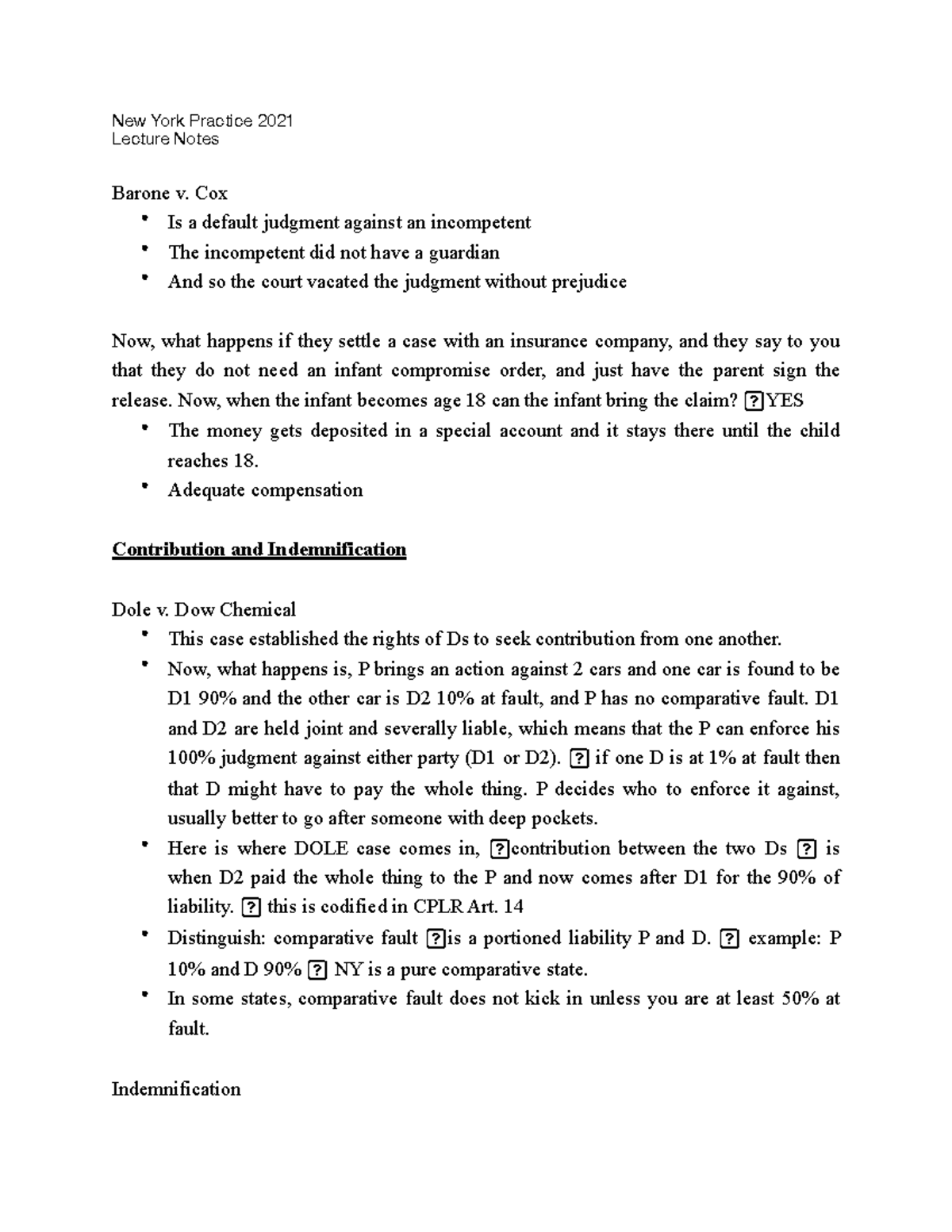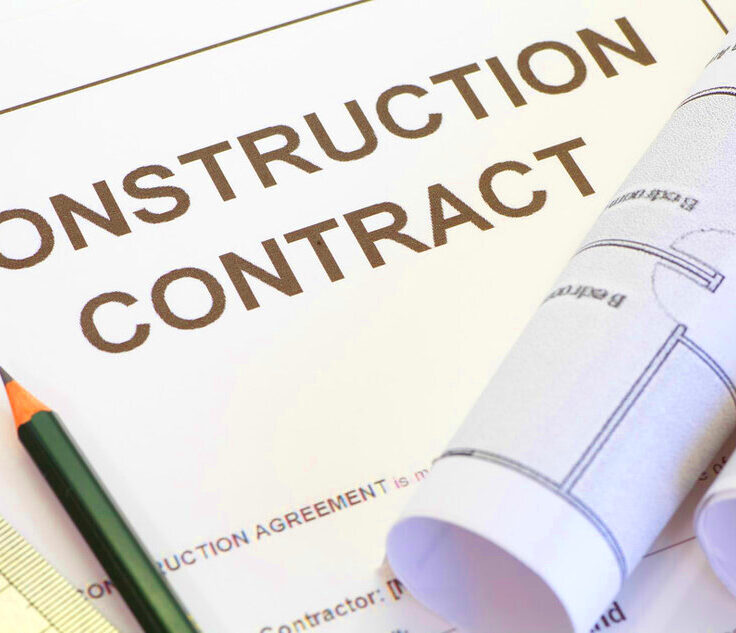New York Common Law Indemnification Explained
Indemnification is a key legal concept in New York that involves one party agreeing to compensate another for certain losses or damages. This principle is crucial in various fields, including construction, insurance, and business contracts. Indemnification helps allocate risk and provides financial protection in case of unforeseen events. In New York, indemnification is primarily governed by common law, which means that court decisions play a significant role in shaping its application. Let’s dive deeper into how indemnification works and why it is essential in New York’s legal landscape.
Types of Indemnification under Common Law

There are several types of indemnification recognized under common law in New York. Each type serves different purposes and is applicable in various contexts. Here are the main types:
- Express Indemnification: This occurs when parties explicitly state their indemnification agreement in a contract. For example, a contractor may agree to indemnify a property owner for any injuries occurring on the job site.
- Implied Indemnification: This type arises by operation of law, even if not stated in a contract. Courts may impose this type of indemnification to prevent unjust enrichment.
- Statutory Indemnification: Certain laws or statutes may mandate indemnification in specific situations, such as workplace injuries governed by workers’ compensation laws.
Requirements for Indemnification Claims
To successfully bring an indemnification claim in New York, certain requirements must be met. These requirements help establish the validity of the claim and protect against unjust or fraudulent claims. The following elements are generally considered:
- Existence of a Contract: There must be a contract between the parties that outlines the indemnification agreement, whether express or implied.
- Loss or Damage: The party seeking indemnification must demonstrate that they have incurred a loss or damage that the indemnifying party is responsible for.
- Notice of Claim: The indemnified party must provide notice to the indemnifying party, allowing them the opportunity to respond or address the claim.
- Proof of Liability: It must be shown that the indemnifying party is liable for the loss or damage incurred by the indemnified party.
Understanding these requirements is crucial for anyone looking to pursue an indemnification claim in New York, as failure to meet any of these elements can lead to a dismissal of the claim.
Differences between Indemnification and Contribution
Indemnification and contribution are two important legal concepts often confused, but they serve distinct purposes in liability allocation. Understanding these differences is essential for parties involved in legal agreements, especially in industries like construction, insurance, and business. Let’s break down how indemnification and contribution differ:
- Nature of Responsibility: Indemnification shifts the entire financial responsibility of a claim from one party to another, while contribution allows multiple parties who are equally liable to share the costs of a claim. In other words, indemnification can fully protect one party, while contribution involves sharing the burden.
- Triggering Events: Indemnification typically arises from a contract or specific legal obligations, whereas contribution usually occurs when multiple parties are found liable for the same damage or loss.
- Legal Basis: Indemnification is often based on an agreement, express or implied, between the parties. Contribution, on the other hand, is rooted in common law and statutory provisions that allow parties to seek reimbursement from co-defendants.
- Claims Process: When seeking indemnification, the indemnified party generally must show that they incurred damages due to the indemnifying party’s actions. In contrast, contribution requires showing that all parties are liable for the same loss.
By understanding these differences, parties can better navigate their legal obligations and rights when facing claims.
Key Case Law Influencing Indemnification in New York
Case law plays a crucial role in shaping the principles of indemnification in New York. Several key cases have established important precedents that influence how indemnification claims are handled in the courts. Here are a few notable cases:
| Case Name | Year | Key Takeaway |
|---|---|---|
| Wiggins v. 21st Century | 1999 | This case clarified that indemnification can be sought even when the indemnified party was partially at fault. |
| Hoffman v. State of New York | 2002 | This case highlighted the importance of written contracts in establishing indemnification obligations. |
| Gonzalez v. New York City Transit Authority | 2005 | In this case, the court ruled that indemnification could apply in situations involving strict liability. |
These cases illustrate how courts interpret indemnification agreements and set the groundwork for future claims. Understanding this legal landscape can be invaluable for anyone looking to navigate indemnification issues in New York.
Indemnification in Construction Contracts
Indemnification plays a significant role in construction contracts, where the risks of accidents and liabilities are prevalent. Contractors, subcontractors, and property owners often use indemnification clauses to protect themselves from various risks. Here’s how indemnification is typically applied in construction contracts:
- Risk Allocation: Indemnification clauses help allocate risks between parties. For instance, a contractor might agree to indemnify a property owner for any injuries that occur on the site, protecting the owner from legal liabilities.
- Insurance Requirements: Many construction contracts require contractors to obtain insurance that covers indemnification obligations. This ensures that funds are available to cover claims arising from accidents or damages.
- Scope of Indemnification: It’s essential for parties to clearly define the scope of indemnification in the contract. This includes specifying what types of losses or damages are covered and any exceptions.
- State Laws and Regulations: Construction contracts must comply with New York laws regarding indemnification. Certain statutes may limit the enforceability of indemnification clauses, particularly in cases of negligence.
By understanding how indemnification works in construction contracts, parties can better protect themselves against potential liabilities and ensure compliance with legal requirements.
Steps to Pursue an Indemnification Claim
Pursuing an indemnification claim can be a complex process, but breaking it down into clear steps can make it more manageable. Whether you’re an individual or a business, understanding these steps is crucial to ensure that your rights are protected. Here’s a straightforward guide to help you through the process:
- Review Your Contracts: Start by examining any contracts related to your situation. Look for indemnification clauses that outline the obligations and responsibilities of the parties involved.
- Gather Evidence: Collect all relevant documentation, including contracts, invoices, and any correspondence related to the claim. This evidence will support your case and help establish your claim.
- Notify the Indemnifying Party: Inform the party you believe is responsible for indemnification. This notification should be in writing and clearly state the basis of your claim.
- Document Your Losses: Keep detailed records of all damages or losses you have incurred. This may include medical expenses, property damage, or lost wages, depending on the situation.
- Consult Legal Counsel: It’s advisable to seek the guidance of an attorney who specializes in indemnification claims. They can help navigate the legal landscape and provide personalized advice.
- File Your Claim: If the indemnifying party disputes your claim or fails to respond, you may need to file a lawsuit. Your attorney can assist with the necessary paperwork and court procedures.
By following these steps, you can better position yourself to successfully pursue an indemnification claim and protect your interests.
Frequently Asked Questions about Indemnification
Indemnification can be a complicated subject, leading to many questions. Here are some frequently asked questions to clarify common concerns:
| Question | Answer |
|---|---|
| What is indemnification? | Indemnification is a legal obligation where one party agrees to compensate another for certain losses or damages. |
| When can I seek indemnification? | You can seek indemnification if you have incurred losses due to another party’s actions, as specified in a contract or by law. |
| Do I need a contract for indemnification? | While express indemnification requires a contract, implied indemnification can occur based on the relationship and circumstances, even without a written agreement. |
| Can I be indemnified if I was partially at fault? | Yes, in some cases, you can still seek indemnification even if you were partially at fault, depending on the contract terms and applicable laws. |
| How long do I have to file an indemnification claim? | The time frame varies based on the nature of the claim and state laws, so it’s essential to consult with a legal expert for specific timelines. |
Understanding these frequently asked questions can help you navigate the complexities of indemnification more effectively.
Conclusion on New York Common Law Indemnification
In summary, indemnification is a vital concept within New York’s legal framework, particularly for those involved in contracts and business dealings. It offers protection and clarity regarding responsibilities in the event of losses or damages. Understanding the types of indemnification, the requirements for claims, and key case law can empower parties to navigate their rights and obligations effectively.
Whether you are in the construction industry, managing a business, or dealing with personal agreements, knowing how indemnification works can significantly impact your legal standing. By following the necessary steps to pursue a claim and addressing common questions, individuals and businesses can better prepare themselves for potential disputes. Ultimately, seeking legal advice is often the best route to ensure your interests are safeguarded in any indemnification scenario.


